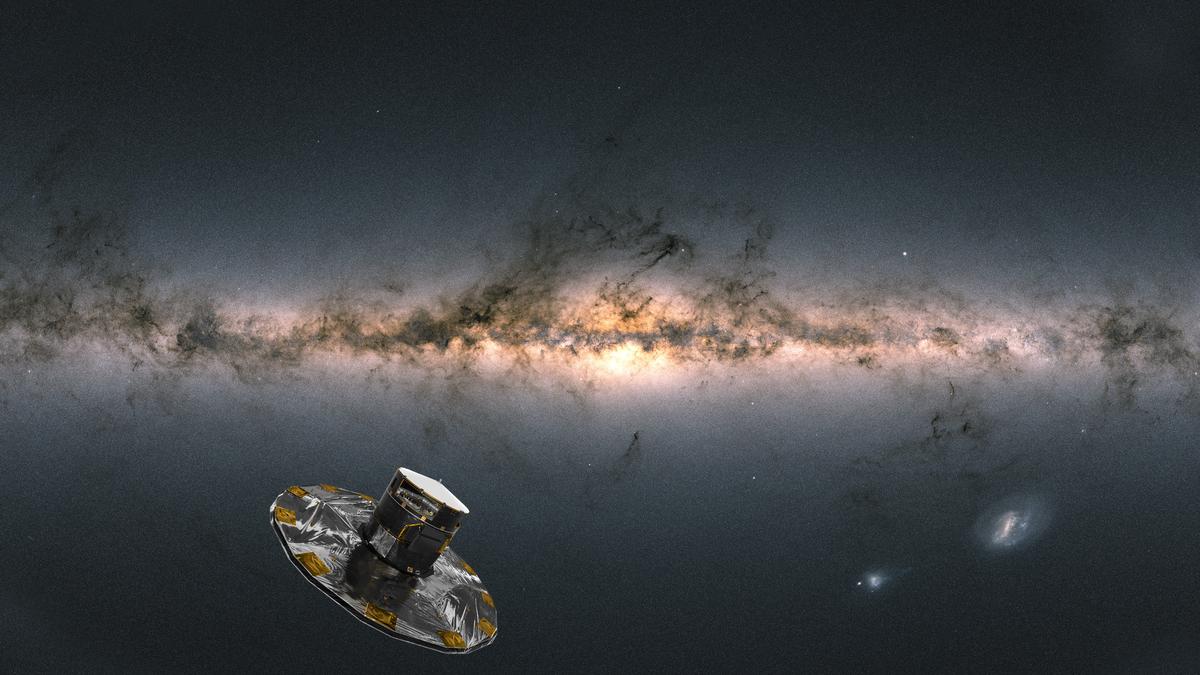Gaia Black Holes

- 10 Feb 2025
In News:
The European Space Agency’s Gaia mission, launched in 2013, continues to redefine our understanding of the Milky Way by detecting celestial phenomena through precise astrometry.
One of its most significant contributions has been the discovery of dormant stellar-mass black holes that are not associated with X-ray emissions—previously the main detection method. These discoveries represent a paradigm shift in black hole detection and open new avenues for astrophysical research.
Gaia BH Series: Discovery and Significance
Gaia BH1
- Discovery Year: 2022
- Location: ~1,560 light years from Earth in the Ophiuchus constellation
- Significance:
- Closest known black hole to Earth
- Detected via a yellow star orbiting a dark mass, whose high orbital velocity implied the presence of a black hole nearly nine times the mass of the Sun
- Validated using data from LAMOST (China) and Magellan Clay Telescope (Chile)
Gaia BH2
- Discovery Year: 2023
- Location: ~3,800 light years away in the Centaurus constellation
- Mass: Around nine solar masses
- Observation Method: Tracked motion of a luminous star orbiting an unseen massive companion
Gaia BH3 – A Landmark Discovery
- Discovery Year: 2024
- Distance from Earth: ~1,926 light years (~2,000 light years), making it the second closest black hole
- Location:Aquila constellation, in the Milky Way’s outer regions
- Mass: ~33 times the mass of the Sun, making it the largest known stellar-mass black hole in the Milky Way
- Orbital Partner: A yellow giant star orbiting every 11.6 years, with an average separation similar to the Sun-Uranus distance
- Special Traits:
- It is a dormant or passive black hole, not actively accreting matter
- Lacks X-ray emissions, suggesting a scarcity of surrounding material
- Its companion star’s chemical composition indicates ancient origins, hinting that such massive black holes were formed early in the universe
Scientific Implications:
- Detection Technique Innovation:Gaia uses astrometric mapping to track the apparent motion of stars across the sky. When a star appears to orbit "empty space," astronomers infer the presence of a massive object—typically a black hole—using Kepler’s laws and the Doppler effect.
- Redefining Black Hole Census:Most black holes were previously detected through X-ray emissions. Gaia has revealed non-emitting black holes, indicating a possibly larger hidden black hole population in our galaxy.
- Historical Linkage:Black holes with masses above 30 solar masses were previously only observed through gravitational waves (LIGO/VIRGO, 2015). Gaia BH3 now provides a local, observable counterpart.
